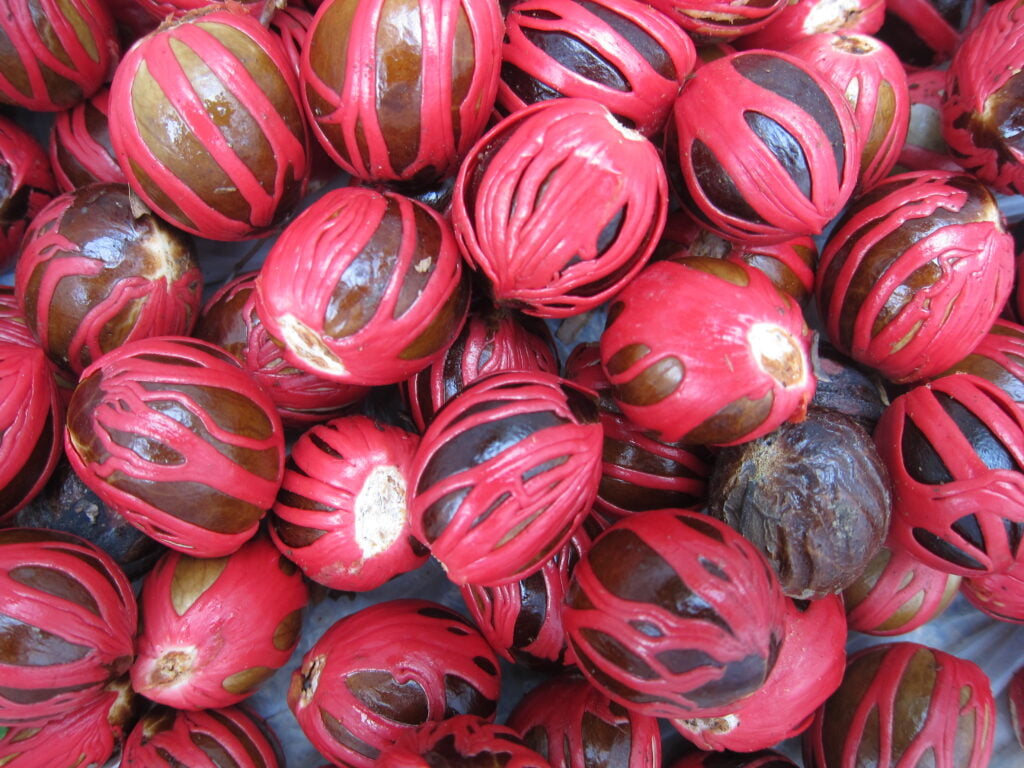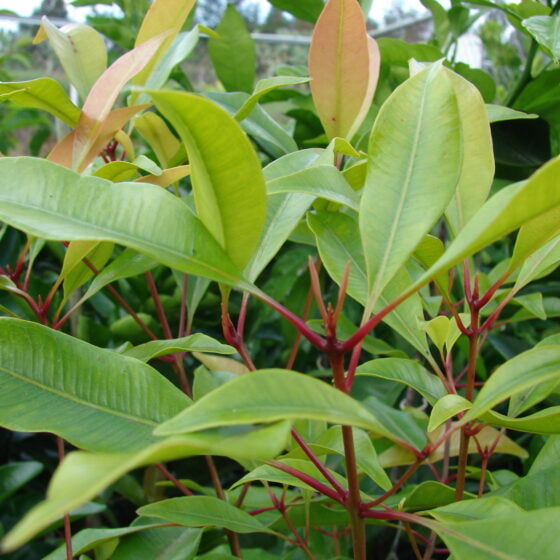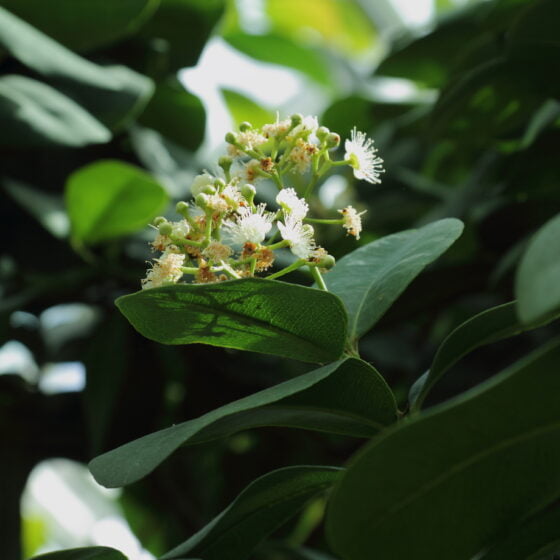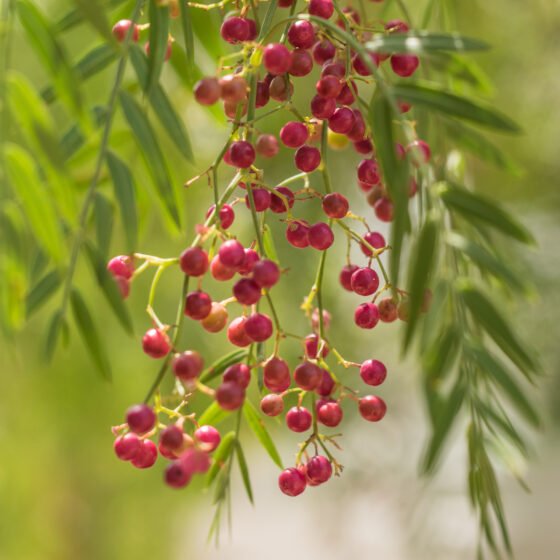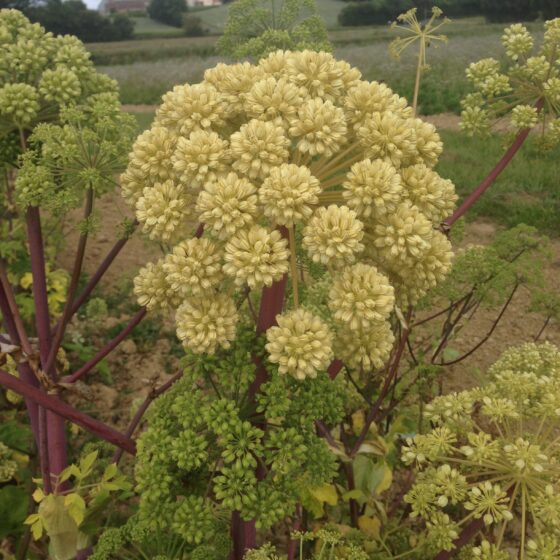
Nutmeg Indonesia
Myristica fragrans
General data
Harvest Calendar
- J
- F
- M
- A
- M
- J
- J
- A
- S
- O
- N
- D
Product details Fragrance side
Nutmeg essential oil is mainly used as a modifier of spicy notes, to give them a more masculine and dry appearance. It is often found in colognes and orientals although it blends perfectly with woody notes as well.
About
The nutmeg tree is a pyramid-shaped tree that grows up to 15 meters high. The fruit is a fleshy, pale-yellow drupe resembling an apricot. Once ripe, the fruit’s pulpy pericarp half-opens into two parts, to reveal a single seed protected by a brown shell. This seed, with high essential oil content, is what is used in the distillation process. It is surrounded by a bright red-orange aril that streaks the hull with color. The fruits are picked when mature with a long-handled, basketed “fruit-picker” making it possible to harvest fruit from high in the tree. The stripped seeds are dried in the shade to prevent deterioration of the lipids (the melting point being 38°C). After six to eight weeks, the inner kernel has dried sufficiently and can be freed from its outer rigid shell. It takes seven years for a nutmeg tree to produce its initial crop. Productivity increases with age, with an optimum yield occurring when the tree is between 15 and 30 years old.
Native to the Indonesian Moluccas, nutmeg long remained unknown in the West. Though used in India and Egypt before Christ, it was imported to the West by the Arabs in the Middle Ages. Like pepper, this rare and extremely expensive spice led to monopolistic trade, one disputed by the Portuguese and Dutch for centuries. The Dutch even developed a way of sterilizing the seeds with lime to control spread of the species. In the end, it was the initiative of French missionary Pierre Poivre that led to illegal nutmeg plants being introduced and cultivated on France’s tropical island territories, putting an end to the Dutch exclusivity.
Fragrance side
Nutmeg essential oil is mainly used as a modifier of spicy notes, to give them a more masculine and dry appearance. It is often found in colognes and orientals although it blends perfectly with woody notes as well.
About
The nutmeg tree is a pyramid-shaped tree that grows up to 15 meters high. The fruit is a fleshy, pale-yellow drupe resembling an apricot. Once ripe, the fruit’s pulpy pericarp half-opens into two parts, to reveal a single seed protected by a brown shell. This seed, with high essential oil content, is what is used in the distillation process. It is surrounded by a bright red-orange aril that streaks the hull with color. The fruits are picked when mature with a long-handled, basketed “fruit-picker” making it possible to harvest fruit from high in the tree. The stripped seeds are dried in the shade to prevent deterioration of the lipids (the melting point being 38°C). After six to eight weeks, the inner kernel has dried sufficiently and can be freed from its outer rigid shell. It takes seven years for a nutmeg tree to produce its initial crop. Productivity increases with age, with an optimum yield occurring when the tree is between 15 and 30 years old.
Native to the Indonesian Moluccas, nutmeg long remained unknown in the West. Though used in India and Egypt before Christ, it was imported to the West by the Arabs in the Middle Ages. Like pepper, this rare and extremely expensive spice led to monopolistic trade, one disputed by the Portuguese and Dutch for centuries. The Dutch even developed a way of sterilizing the seeds with lime to control spread of the species. In the end, it was the initiative of French missionary Pierre Poivre that led to illegal nutmeg plants being introduced and cultivated on France’s tropical island territories, putting an end to the Dutch exclusivity.
Other type of extracts
(Spicy)
